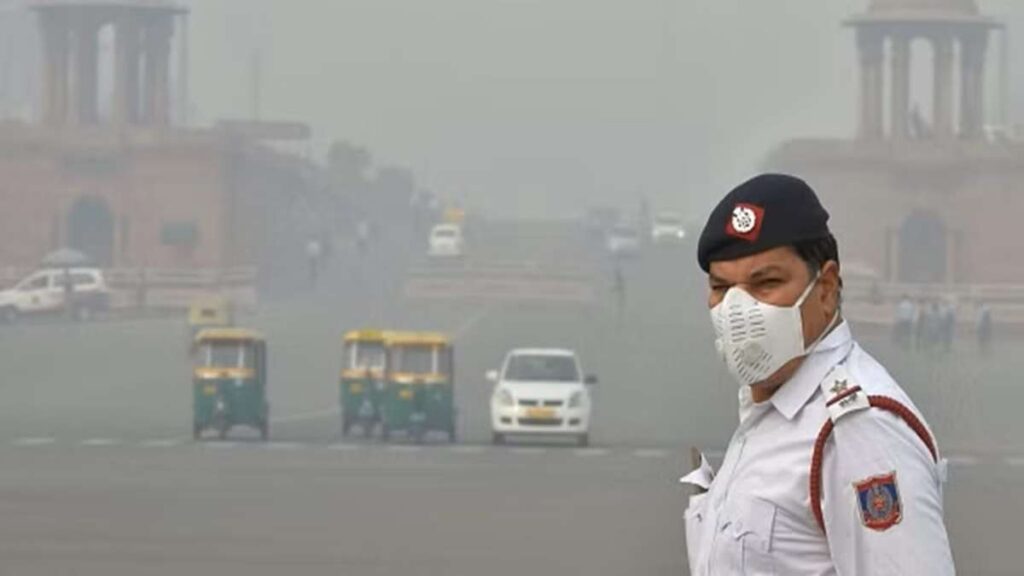A dense layer of smog engulfed Delhi on Monday morning after people burst crackers on Diwali night, leading to heavy pollution across the national capital. This comes as the city is already battling with its deteriorating air quality.
Delhi recorded a jump in pollution levels and a smoky haze returned on Monday morning after residents flouted the ban on firecrackers on Diwali night. The city recorded its best air quality on Diwali day in eight years on Sunday, with its 24-hour average Air Quality Index (AQI) standing at 218 at 4 pm. However, firecracker bursting till late Sunday night led to a spike in pollution levels amid low temperatures.
Visuals from several parts of Delhi depicted dense fog engulfing the streets, severely limiting sight and making it difficult to see beyond a few hundred meters. It should be noted here that pollution has been a problem for the national capital for the past few weeks. After Diwali, it is now quite likely that the city will once again see an increase in pollution levels, making it difficult for the residents of the city to breathe.
The Air quality across Delhi continues to be in the ‘Poor’ category as per the Central Pollution Control Board (CPCB). The Air Quality Index (AQI) in several regions across the city was alarming.
At 7 am, the AQI stood at 275 (poor category). Pollution levels even entered the very poor category in some areas, including Shadipur (315), Ayanagar (311), Lodhi Road (308), Pusa (355) and Jahangirpuri (333).
The concentration of PM2.5, fine particulate matter that can penetrate deep into the respiratory system and trigger respiratory problems, exceeded the safe limit of 60 microgramme per cubic metre by six to seven times in these areas.



